Self-care is about nurturing and replenishing your body inside and out to help you look and feel your best. After all, true health care starts with excellent self-care. In the last three self-care prescriptions, we covered mindset, food, and movement. So, last but not least is how to effectively nourish and protect your skin on the outside! That’s why today’s self-care prescription covers skin care. We’ll start with busting myths around skin care and end with a fun and restorative practice for you to fully embrace the benefits of your self-care skin care prescription.
7 common myths around skin care
1. What I put on my skin stays on the outside, so it doesn’t impact my overall health.
This is NOT true. What you put on your skin can absorb through your skin and get into your circulation. Toxic ingredients like parabens and phthalates have been shown to get into the bloodstream from topical use in personal care products. The extent to which they get absorbed varies, depending upon the individual person’s skin and the molecular size and structure of the ingredients.
2. Those toxic ingredients are in small amounts, so it doesn’t really matter.
This is a myth that usually comes from manufacturers who don’t want to remove parabens or other toxic ingredients from their skin care products. As a manufacturer of skin care products, I know how expensive it is to make products and to make changes. But, we’re talking about your health here! So, as a doctor, I would never want you to use even a small amount of toxic ingredients in your skin care products. We’re exposed to more toxins now than ever. We’re surrounded – in our air, water, food, homes, business, and personal care products. So, every place you can reduce exposures makes a huge difference to your health and mother earth (and for future generations to come).
3. Natural skin care products don’t work.
Well, this myth gets me really worked up – and it’s the reason I ended up creating my own skin care line. This is a myth that led me to dig into the research and learn what makes skin care truly work. If your natural skin care products are not working, it’s not because it’s natural! It’s because you haven’t found the right one, the one that is natural and effective. And, you shouldn’t settle for anything less.
4. If the skin care product says “hypoallergenic” or “natural,” then it’s safe to use.
Unfortunately, this is incorrect because there are no firm regulations around these two words and specifically what that means. So, it’s up to manufacturers to use their own judgment. Most of the time that means it’s used loosely, which can be misleading.
5. It’s essential to change skin care products periodically because they’ll stop working.
If you’re using a high-quality skin care line (and I’ll explain in a moment how to determine this), the products should work right away and continue to work for years to come. When people tell me their products stopped working, I start to wonder if they really ever worked at all or maybe they simply need some exfoliation or other treatments to help the products to continue to do their magic.
6. Healthy skin only comes from within.
While this is definitely not something you’ll hear your dermatologist say, you may have heard this from a health coach or nutritionist. While I do believe that addressing the underlying causes behind skin issues starts from within, what you put on your skin makes a difference too.
7. Healthy skin only comes from topical treatments and skin care.
Yikes! That’s definitely not the message we’re portraying here at The Spa Dr. Even though we sell skin care products, I would never steer you down the path of claiming that topical products are the only solution to healthy skin. Six years back, while seeing patients at the Waldorf Astoria in Park City, is when I really started seeing that the magical combination is clean skin from within while combining with a natural + effective skin care system. That’s what led me to write my book and come out with The Spa Dr. skin care system.
What are the three keys to truly healthy skin care?
- Free of hormone-disrupting chemicals and other harmful ingredients
- Contain active natural ingredients in their pure and vital form
- Formulated with the perfect pH to promote a healthy skin microbiome
Skin care made with these three keys in mind is natural and effective.
Free of hormone-disrupting chemicals and other harmful ingredients
The first step to a clean slate involves taking a closer look at what you’re putting on your skin. According to the Environmental Working Group (EWG), the average person uses nine personal care products every day, which exposes us to 126 unique ingredients. The National Institute of Occupational Safety and Health reported nearly 900 toxic chemicals are used in skin care and cosmetic products. While that may seem like a lot, the European Union has actually banned more than 1,000 ingredients from personal care products. Here’s the kicker: The U.S. Food and Drug Administration has banned only eleven ingredients in personal care products!
3 skin care ingredients to avoid
While there are over 1000 ingredients you’ll want to avoid, here is an example of 3 ingredients to avoid.
Fragrance: Avoid all fragrance unless it’s natural, such as from pure essential oils. Fragrances can contain a number of endocrine-disrupting chemicals (EDCs) and are among the top five allergens in the world. EDCs are a class of chemicals that research has associated with certain conditions, such as thyroid problems, infertility, early menopause, early puberty, obesity, diabetes, and certain types of cancer, including prostate, testicular, and breast cancer.
One chemical of particular concern is diethyl phthalate (DEP), which is used to make plastics then used in automobile parts, toys, tools, and to make food packaging more flexible. Diethyl phthalate is not part of the chain of chemicals that compose the plastic, so it doesn’t bind tightly, which means it can be released easily into its surroundings. DEP is also used in a number of personal care products, including skin care, hairspray, nail polish, deodorant, and perfume. It is used to make smells and colors last longer, but it’s a known EDC.
Parabens (propyl-, isopropyl-, butyl-, and isobutyl-): Parabens are known xenoestrogens, which means they have estrogenic activity in the body. A 2004 study published in the Journal of Applied Toxicology detected parabens in breast tumors and discussed the estrogen-like properties of parabens. Parabens have been found in breast tumors, yet many skin care companies deny this means anything for consumers’ health. While this study does not necessarily show that parabens directly cause breast cancer, this research does mean parabens can be absorbed through the skin and taken up and stored in our body tissues, including the breasts.
Oxybenzone (benzophenone), octinoxate, and homosalate: Found in many sunscreens, lip balms, and other products with SPF, these chemicals may have hormone-disrupting effects. In 2008 the CDC reported that oxybenzone was found in the urine of 97 percent of people tested, so we know it’s easily absorbed. Studies also show oxybenzone can build up in fatty tissues and is linked to allergic reactions.
Contain active natural ingredients in their pure and vital form
The good news (after hearing all the bad news about toxic ingredients) is that there are many natural ingredient alternatives. The research now shows that ingredients such as green tea extract, CoQ10, and vitamin C have great skin benefits.
Many skin care companies are now using natural ingredients, but here’s the key: look closely at the label because you’ll likely find many other synthetic ingredients in there. So, it’s the formulas that really make the difference, not just a few natural ingredients.
And, it’s important to know where the raw materials come from and how much is actually in the product. Most skin care products contain such a small amount of the natural ingredients that they’re not actually going to be effective. Unfortunately, this is one of the reasons we’re often hearing, “natural skin care products don’t work.”
Formulated with the perfect pH to promote a healthy skin microbiome
Your skin’s outer layer, or epidermis, in a healthy state has a natural pH level of about 4 to 4.5, which helps protect it and keep it looking clean and clear. When you use skincare products that have a higher pH (generally over 5.5), then it can dry out your skin and make it more prone to infections, breakouts, and even early signs of aging (wrinkles and sagging skin).
Even water has a pH of seven, which is too high for healthy clear skin. Whenever water touches your skin, it’s important to restore the pH to a mildly acidic level using high-quality skincare.
Keeping your skin in its ideal pH zone by using mildly acidic skincare products helps protect your skin’s natural microbiome. Our skin has its own microbiome that helps keep it clear of blemishes and break- outs—and prevents premature aging. When skin lotions and treatments disturb our skin’s delicate pH balance, our skin micro- biome is affected. While trying to treat the issues, we’re only making it worse when we disrupt the pH and microbiome!
There are close to one trillion bacteria that reside on your epidermis. When balanced, these microorganisms help protect your skin from inflammation, acne, and early aging. So, I encourage you to check your skincare pH to ensure it’s in an ideal pH range. You can even use a pH strip to test your skin care products if the manufacturer doesn’t share that information.
After doing the research and the realization that I couldn’t find a skin care line that embraced these three keys, I created The Spa Dr. skin care products.
Your daily self-care skin care ritual
Creating a daily ritual helps awaken skin in the morning and restore skin while you’re sleeping. I recommend these steps in your daily routine:
Cleanse in the morning to remove perspiration and balance oils and microorganisms on your skin. At night, a cleanser should remove any makeup and debris (sweat, dirt, and pollution residue) from the day. While it should effectively clean, it should NOT strip your skip of its beneficial oils, microbiome, or damage the delicate pH balance.
Nourish with serum. If you have a mildly acidic pH cleanser, you do not need a toner. A well-made toner or serum can saturate the skin with antioxidants and other nutrients to help nourish and protect it. Apply this in the morning to revitalize skin and prepare for the day, and again at night to rebalance your skin.
Moisturize both morning and night to hydrate and plump skin with natural actives. Many moisturizers simply sit on the surface and make you look glowy while you’re wearing them but do not have a lasting effect. You may use heavy or light moisturizers, depending on your preference and skin type. My skin care system offers one moisturizer for all skin types, as well as a fourth step I call “glow boost” because it contains a blend of organic extra-virgin cold-pressed oils that provide extra hydration and antioxidant benefit for a natural glow. Protect in the mornings (or anytime you’re spending time outdoors in the sun) with an SPF sunscreen made with zinc oxide and free of harmful ingredients like oxybenzone.
Weekly additions:
Exfoliation is another important part of the skin care routine, but not as a daily practice. Gentle exfoliation once a week can help slough off dead skin and enhance the effectiveness of your daily steps.
Masks and other “treatments” can be used to address specific skin issues.
Self-care pampering ritual
Now, I’d like to walk you through a self-care pampering ritual.
As you do your skin care routine today, I encourage you to follow this and embrace all of your senses.
- Smell – enjoy the scents and olfactory experience of the skincare products – the essential oils or natural ingredients in the products, even unscented products have a scent if you pay attention – close your eyes and take a moment to take in the smells. Appreciate the healing powers of nature and the lack of synthetic fragrance that can be unhealthy for skin as well as your body.
- Feel – luxuriate in the touch and feel of the hydrating, soothing, nourishing ingredients. Each step plays a role – first the cleansing without damaging or stripping your skin, then the nourishing, hydrating and replenishing ingredients and rebalancing formulas.
- See – appreciate your skin as it glistens and glows from the cleansing and moisturizing ingredients.
Listen – take a moment to take in the sounds of water trickling from the faucet. If you have your window open, maybe you catch the sound of a bird or the wind in the trees. Or you may play soothing music… Close your eyes and relish the moment.
For morning routines, it’s your opportunity to set the tone for the day. For evening, it’s a chance to unwind, relax and set a sense of calm, peace and healing timing for a restorative night’s sleep.
After you take in the senses of your self-care skin care ritual, notice how you feel. An excellent nourish skin care routine can feed your soul and relax your mind. Remember, this is time for you to connect with yourself and to show gratitude and appreciation for your skin, your body, and your health.
This may seem like a lot to take in at once, but I hope that this encourages you to take better care of your skin and your health. With a few simple actions, you can make effective changes that truly improve the vibrancy of your skin, the clarity of your thoughts, and nurture your health.
And if you want to learn more about the last in our series, please watch this video.
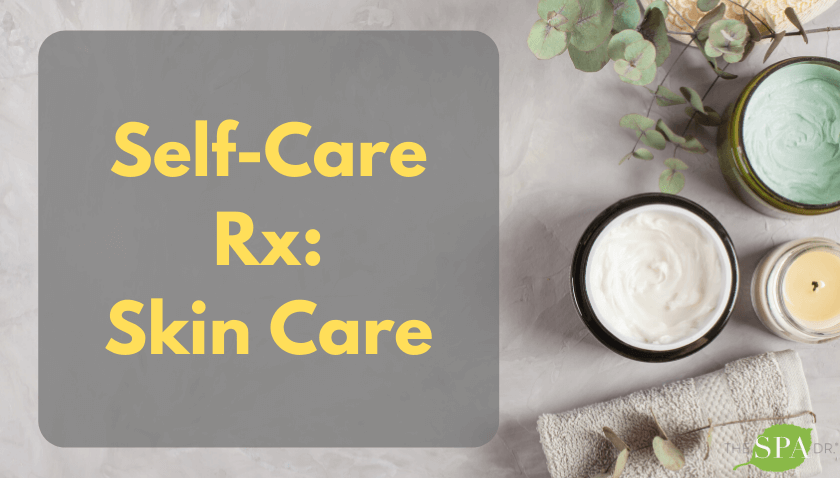
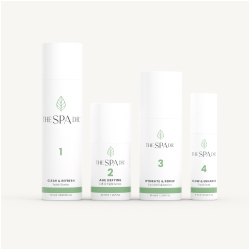
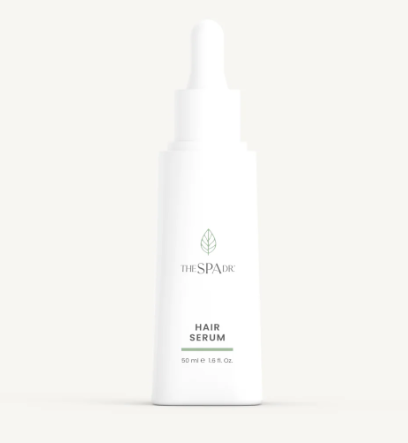
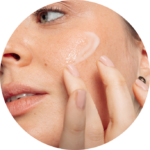

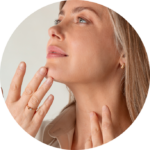

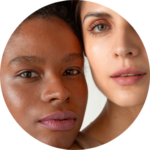

Reader Interactions